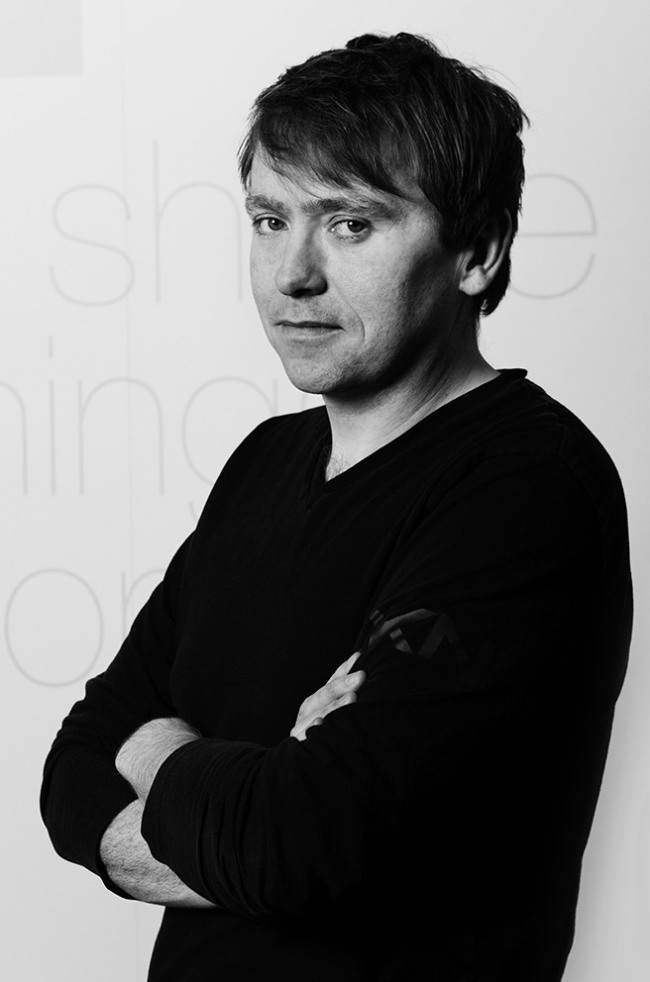‘IT and sustainability can be reconciled’
British product designer speaks on how IT can help dematerialize consumption
By Korea HeraldPublished : Nov. 23, 2014 - 20:59
Sustainable design isn’t just about reducing environmental impacts.
“It can (also) be about design that tackles some of the world’s big sustainability challenges like climate change, resource shortages, waste and poverty, access to water, poverty and equality,” said British product designer Matthew Cockerill in an email interview.
Cockerill, associate design director at Seymourpowell who is taking part as a speaker in the Herald Design Forum 2014, stressed how IT could be more sustainable.
“It can (also) be about design that tackles some of the world’s big sustainability challenges like climate change, resource shortages, waste and poverty, access to water, poverty and equality,” said British product designer Matthew Cockerill in an email interview.
Cockerill, associate design director at Seymourpowell who is taking part as a speaker in the Herald Design Forum 2014, stressed how IT could be more sustainable.

“With its fast pace and rapid product obsolescence, IT would seem the absolute antithesis of sustainability, but there are no reasons why the two cannot be reconciled,” he said.
“The move to digital solutions has the potential to ‘dematerialize’ products, significantly reducing the environmental impacts. For instance, moving from analogue to digital music models (CD’s to MP3’s a la iTunes) can reduce impacts by 40-80 percent depending on the mode of consumption, so the shift to digital, information technology may not be implicitly bad.”
The designer also noted that the overlapping of product and IT service, a trend accelerated by the growth of mobile, could help dematerialize consumption.
“Products began to sprout lots of services and services started to look around for physical representations of themselves or physical channels to deliver their services,” he said.
“This overlapping of product and service can offer the opportunity to significantly dematerialize consumption by delivering utility and benefits in much less materially intensive ways whilst still making money for companies.”
The blurring line between product and service in the IT industry has led him to work with both a product manufacturer and a service provider.
Cockerill worked with a Korean company for the first time when he moved to Seoul to work with a TV team at Samsung Electronics in 2003. Years later, he also led a project with KT.
“What struck me was the scale of ambition KT had ― bringing a consistent product identity to KT’s family of 56 products,” he said.
“We created packaging that not just visually fitted with their product identity but also encouraged reuse. Simply turn the packaging inside out and refolding the box allowed the creation of a useful cable management system.”
Cockerill’s suggestions for greater sustainability in the IT industry include adopting a Circular Economy model of sourcing manufacturing and sales: in which products could either be returned, refurbished, reused or recycled indefinitely.
“This might also change models of ownership, away from sales toward buy-back, leasing and service schemes,” he said.
“Circular models are becoming more commercially attractive due to the increasing unavailability of raw materials and resources necessary to fuel IT growth as well as rising costs of extracting and sourcing them.”
Fairphone, a smartphone that is looking at design options that promote ethical sourcing, longevity, worker welfare and repair, is an example.
In the end, sustainable design is all about proactive engagement in various areas of sustainability.
“A sustainable future won’t arrive by itself; we have to design it,” Cockerill said.
By Hwang Yu-jin and Kim So-hyun
(hyjgogo@heraldcorp.com)
-
Articles by Korea Herald



![[Exclusive] Korean military set to ban iPhones over 'security' concerns](http://res.heraldm.com/phpwas/restmb_idxmake.php?idx=644&simg=/content/image/2024/04/23/20240423050599_0.jpg&u=20240423183955)

![[Graphic News] 77% of young Koreans still financially dependent](http://res.heraldm.com/phpwas/restmb_idxmake.php?idx=644&simg=/content/image/2024/04/22/20240422050762_0.gif&u=)



![[Pressure points] Leggings in public: Fashion statement or social faux pas?](http://res.heraldm.com/phpwas/restmb_idxmake.php?idx=644&simg=/content/image/2024/04/23/20240423050669_0.jpg&u=)










